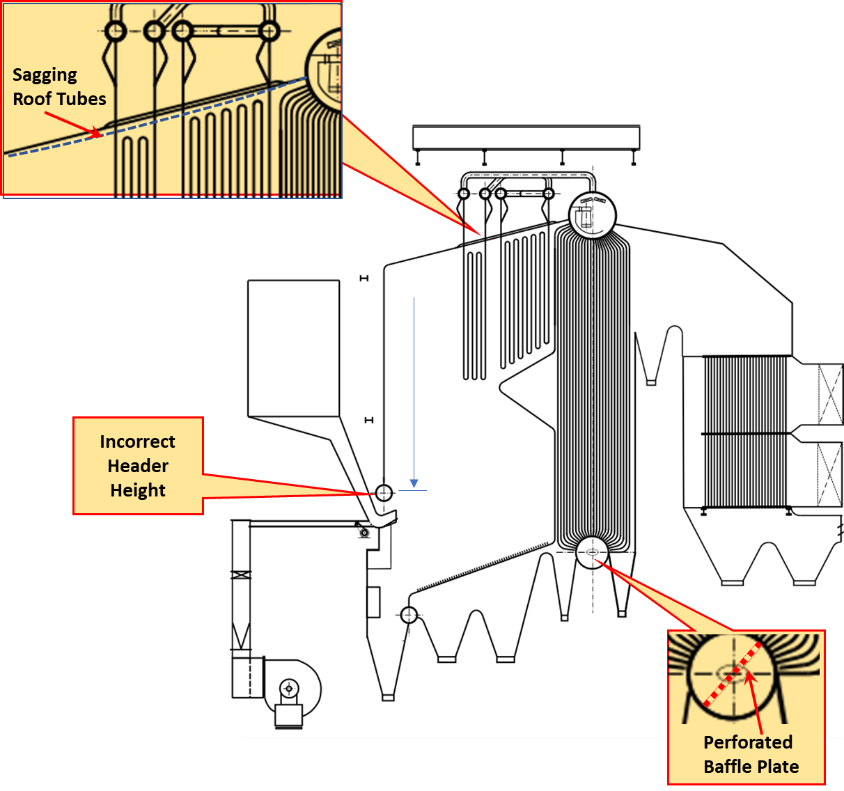CASE STUDY
Bagasse Fired Boiler | Sagging Roof Tubes
| PLANT LOCATION | Asia |
| FACILITY DESCRIPTION | Sugar Refinery |
| BOILER TYPE | Bi Drum – Watertube |
| BOILER CAPACITY | 120,000 [lbm/hr] |
| STEAM CONDITIONS | 185 [psi] @ Sat[°C] |
Conditions:
The furnace roof tubes in a low-pressure sugar mill grate fired boiler experienced persistent sagging roof tube issues which suggested that the tubes were regularly overheating. The boiler manufacturer insisted that the tubes sagged because of incorrect operational practices, but the operator disagreed. The sugar mill boiler owners had grave concerns that the entire roof would collapse into the furnace if the problem was not quickly addressed. They chose to install a beam above the roof tubes as a temporary measure to address the problem.
Design Boiler was engaged to investigate the problem. A circulation model of the boiler was set up and this indicated that the overheating of the furnace tubes was due to a circulation design defect. In essence the height of the furnace wall tubes feeding into the roof was too short to generate the required driving head needed to ensure positive flow through the roof tubes at normal loads. Insufficient flow caused the tubes to overheat and sag. This can be a problem with grate fired boilers like this one, which typically have a shortened front wall to provide access for stokers and fuel spreading equipment.
The solution to the problem was found by reconfiguring the circulation model to assess a range of possible modifications. As is so often the case with circulation systems the solution can be counterintuitive. This circulation modelling found that if the total circulating flow through the convection bank was reduced, the net system driving head could be increased sufficiently to boost the circulating flow through the roof tubes, keeping the tubes cool and preventing them sagging. A perforated mud drum baffle plate was designed by simulating its performance using the circulation model, and following minor design adjustments, was subsequently installed in the boiler. The baffle restricted the rising flow within the convection bank thereby slowing down the total circulating flow, reducing the system pressure losses and increasing the overall driving head. This increased the flow through the roof tubes sufficient to keep them cool. The modification was successful and completely eliminated the problem of sagging roof tubes.

